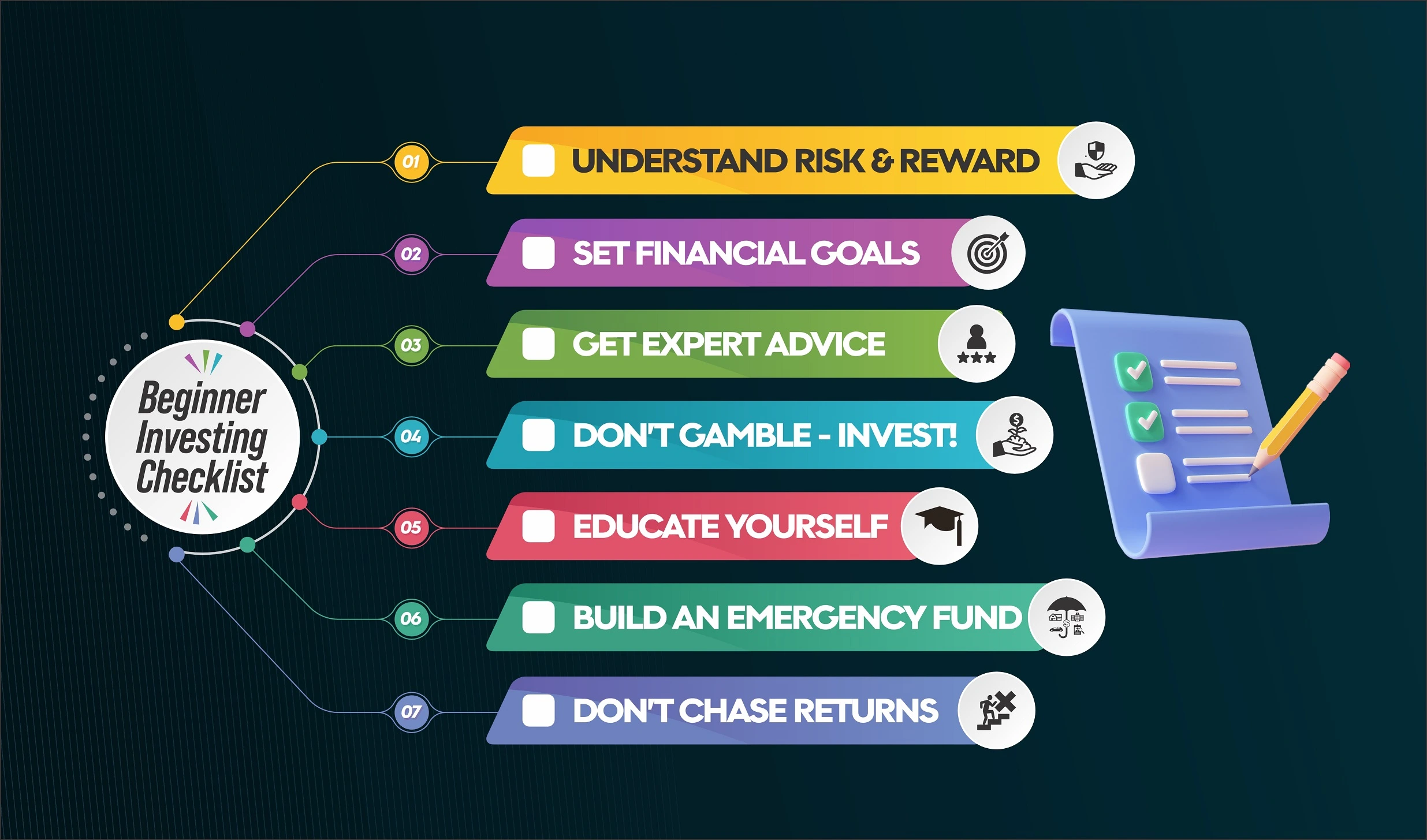Investing is an essential part of financial growth, and it can seem overwhelming at first. But don’t worry! This guide to investing for beginners will take you through everything you need to know to get started on the right foot. Whether you want to build wealth for the future or just make your money work harder, understanding the basics of investing will set you on the right path.
What Is Investing and Why Should You Care?
Investing is the act of putting your money into assets (like stocks, bonds, or real estate) with the hope that they will grow in value over time. The goal is to increase your wealth and achieve financial freedom.
- Building wealth: Investing allows you to grow your money by earning returns on your investments.
- Planning for the future: Smart investments can help you build a retirement fund, save for your children’s education, or create a safety net for unexpected expenses.
- Outpacing inflation: Inflation erodes the purchasing power of money over time. By investing, you can potentially earn returns that outpace inflation, helping you maintain or grow your wealth.
The Basics of Investing for Beginners
Before diving into the world of investing, it’s important to understand some key concepts. Here’s a quick breakdown of the basics:
Types of Investments
There are various types of investments you can make, and they come with different levels of risk. Here are some of the most common ones:
- Stocks: Buying stocks means owning a small piece of a company. Stocks tend to provide high returns, but they can also be volatile.
- Bonds: When you buy bonds, you’re essentially lending money to a government or corporation in exchange for interest. Bonds are generally considered safer but offer lower returns.
- Mutual Funds: These are collections of stocks, bonds, or other assets managed by a professional. They are a good way for beginners to diversify without having to pick individual stocks.
- Real Estate: Investing in property, whether it’s residential or commercial, is a popular choice. It offers both income (through rent) and potential long-term growth.
Risk and Return
Investments come with varying degrees of risk. Generally, the higher the risk, the higher the potential return. But don’t let that scare you! Investing for beginners is about finding the right balance.
- Low-risk investments: These tend to offer lower returns but are safer, such as government bonds or savings accounts.
- High-risk investments: These offer the possibility of higher returns but come with the potential for significant losses, like stocks in new or volatile companies.
Understanding your risk tolerance is essential to choosing the right investments for your goals.
How to Get Started with Investing
So, how can you start investing if you’re a beginner? Here’s a simple step-by-step approach:
Step 1: Set Your Financial Goals
Before you invest a single penny, you need to understand why you are investing. Your goals will guide your investment strategy. Are you saving for retirement? Do you want to buy a home? Or are you looking for extra income? Your goals will determine the types of investments that are best suited for you.
Step 2: Create an Emergency Fund
Before jumping into investing, it’s crucial to have a safety net. An emergency fund, usually covering 3-6 months of expenses, is essential for protecting yourself from unexpected costs. Once your emergency fund is in place, you’ll feel more confident about taking the next steps in investing for beginners.
Step 3: Choose the Right Investment Accounts
Different investment accounts come with different tax advantages. Here are a few common types of accounts:
- Individual Retirement Accounts (IRA): An IRA allows your investments to grow tax-free or tax-deferred until you retire.
- 401(k): Offered through many employers, a 401(k) is a retirement account that often includes employer matching contributions.
- Brokerage Accounts: These are general investment accounts where you can buy and sell assets like stocks and bonds. They’re not tax-advantaged, but they offer flexibility.
Step 4: Diversify Your Portfolio
The key to long-term investing success is diversification. This means spreading your investments across various types of assets to reduce risk. For example, instead of just investing in one stock, you could invest in a mutual fund that includes many different stocks and bonds.
Example of a Diversified Portfolio:
| Asset Type | Percentage of Portfolio |
|---|---|
| Stocks | 50% |
| Bonds | 30% |
| Real Estate | 15% |
| Cash | 5% |
Step 5: Start Small and Stay Consistent
It’s easy to get caught up in the excitement of investing for beginners, but remember: you don’t have to start big. In fact, many experts recommend starting small. You can always add more over time as you become more comfortable with the process.
Common Mistakes Beginners Make and How to Avoid Them
As a beginner investor, there are a few common mistakes that many people make. Here’s how to avoid them:
- Trying to time the market: Predicting when the market will go up or down is nearly impossible. Focus on the long-term and don’t worry about short-term fluctuations.
- Not doing enough research: Don’t invest in something just because it’s trending. Make sure you understand what you’re investing in.
- Chasing after “hot” tips: Everyone has a friend or family member who swears by a stock or investment. But remember, no one knows the future. Do your own research and invest based on your goals and risk tolerance.
- Focusing too much on one type of investment: Diversification is key. Relying on a single stock or asset could put you at significant risk.
Long-Term vs. Short-Term Investments
When you’re new to investing, it can be tempting to focus on quick gains. However, investing for beginners is a long-term game. Here’s the difference between short-term and long-term investing:
- Short-term investments: These are typically more speculative and focus on quick returns. They might include day trading or investing in volatile stocks.
- Long-term investments: These focus on steady growth over time. The stock market tends to increase in value over the long term, making it ideal for retirement or wealth-building purposes.
Why Long-Term Investing is Ideal for Beginners
- Compounding growth: Long-term investments grow over time, benefiting from compound interest.
- Less stress: When you’re not worried about day-to-day market fluctuations, you can stay focused on your long-term goals.
- Lower fees: Short-term trading often involves higher fees and taxes.
How to Monitor and Adjust Your Investments
Investing doesn’t stop once you make your first purchase. To be successful, you need to monitor your investments and make adjustments when necessary.
- Review your portfolio regularly: Once every 6-12 months, check your portfolio to ensure it still aligns with your financial goals.
- Rebalance your portfolio: If one asset class (like stocks) has grown significantly, you might need to sell some and reinvest in others to maintain your desired balance.
- Stay patient: The key to long-term success in investing is patience. Stay the course and give your investments time to grow.
Conclusion: The Power of Investing for Beginners
Investing for beginners may seem like a daunting task, but with the right knowledge and approach, you can achieve your financial goals. Start by setting clear objectives, diversifying your investments, and focusing on the long-term. Over time, you’ll gain confidence and experience, helping you become a more skilled investor.
Remember, the most important thing is to start! The earlier you begin investing, the more time your money has to grow. Whether you’re saving for retirement, building wealth, or securing your future, investing is the path to financial freedom.









